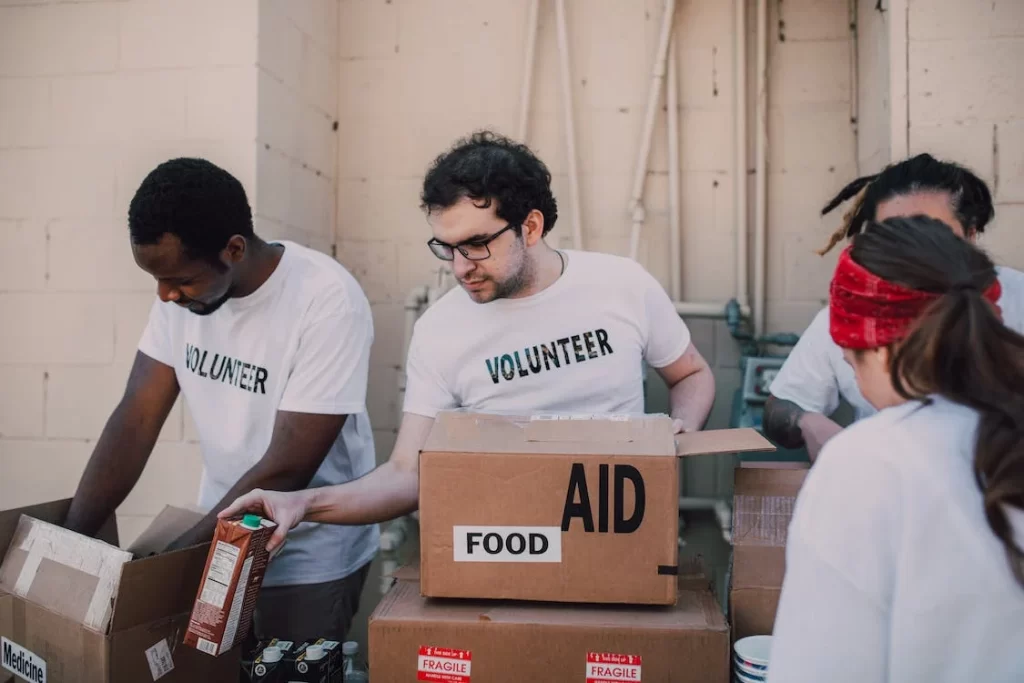The changing face of the volunteer, the rise of new volunteering formats and a boom in digital donations: research reveals volunteerism trends for the year ahead

A few short years ago, volunteering was characterised mainly by its on-the-ground presence; good-hearted individuals could typically be found helping out at non-profit organisations (NPOs) or communities in need – doing everything from ladling soup for the hungry to handing out food parcels or clothing hampers.
Yet the past few years have seen a fundamental shift across the volunteering landscape that has resulted in this picture becoming far more fragmented. Patronella Sono, Staff Volunteerism Portfolio (SVP) Specialist at Momentum Metropolitan, says: “Just as with almost every facet of our lives, the pandemic had a significant impact on volunteering. Almost immediately, these on-the-ground activities were forced to cease, as people were told to stay at home. Yet, at the same time, need only deepened under the pandemic’s hardship.”
Yet the spirit of human kindness cannot be dampened, and volunteers soon found other avenues to support their communities, which ignited some exciting shifts in the space almost three years later.
Sono weighs in on the volunteerism trends we can expect to see in 2023.
The volunteer profile is shifting
“In the past, the average volunteer was older, but recently, we’re seeing more Millennials and even Gen Zers come to the party,” says Sono. Several years ago, data from the United States (US) Bureau of Labour Statistics revealed that the majority of those who volunteered fell within the Generation X category (28,9%), followed by Baby Boomers (25.7%), and then Millennials (21.9%).
While there is no readily-available, comparable data for South Africa, a similar pattern for that period can be assumed – but now that pattern is changing, says Sono. Released at the end of last year, the Momentum Metropolitan Volunteerism Report,an in-depth study into the current and future states of volunteerism in South Africa, revealed that of its sample surveyed, the average age of the majority of volunteers was between 25 – 34 (38%), once again disproving the general assumption that Millennials are self-centred and lazy.
“Research continues to show that young people are becoming more and more concerned about their own contribution to positively impacting society or making a difference in other people’s lives,” explains Sono.
The Report’s volunteer sample also revealed a significant gender skew, with 83% of respondents being female, as well as degree-educated (36%) and black (71%). This underpins Sono’s own observations, who says that in her experience leading the company’s volunteerism programmes, she has noted that significantly more women than men volunteer. “Research suggests that women tend to be more empathetic than men, so this finding makes sense within this context.”
The rise of new volunteering formats
Volunteering has long been defined by its physical nature, yet thanks to the pandemic and the acceleration of digital transformation and adoption, this has changed. “Technology has increased convenience and access. Volunteering is no longer just something one can do in their spare time – but rather, they are now able to convert this spare time into impact.
“As a result, we’re seeing new volunteerism formats emerge, enabled by digital platforms such as forgood. This includes micro-volunteering (volunteer work that takes place in short time increments), virtual volunteering (volunteer work conducted online), skills-based volunteering (engages the professional skills of the volunteer, such as a graphic designer creating a poster for an NPO), and hybrid volunteering (a combination of virtual and on-the-ground volunteering),” says Sono.
The Momentum Metropolitan Volunteerism Report also showed that when volunteering, 66% of respondents preferred to provide their skills or services, with this selection being more prevalent among the 25 – 34 age band. Sono highlights that older volunteers tend to have families and thus their time is limited, so they’re more likely to make donations.
The boom in digital donations
Time and money are both currencies, and human beings are seldom rich in both. Parallel to the increase in skills-based volunteerism is a boom in digital donations thanks to the proliferation and increasing sophistication of payment platforms, as well as the fact that individuals are becoming increasingly time-poor, given the demands of modern life.
“Many local NPOs are registered on sites such as GivenGain, a fundraising platform for charities, as well as payment platforms such as Zapper, Snapscan and Payfast, which has allowed them to benefit from this shift in consumer preference,” says Sono.
This is supported by an international study by Barclays Corporate Banking, which found that the majority of charities surveyed had noted a ‘significant increase’ in digital donations after the pandemic. Sono says she has also seen this phenomenon in Momentum Metropolitan’s payroll donation programme, which allows employees the option of having a chosen amount pre-deducted from their salaries and electronically transferred to an NPO of their choice. “The total sum of these digital donations seems to be growing year after year,” she says.